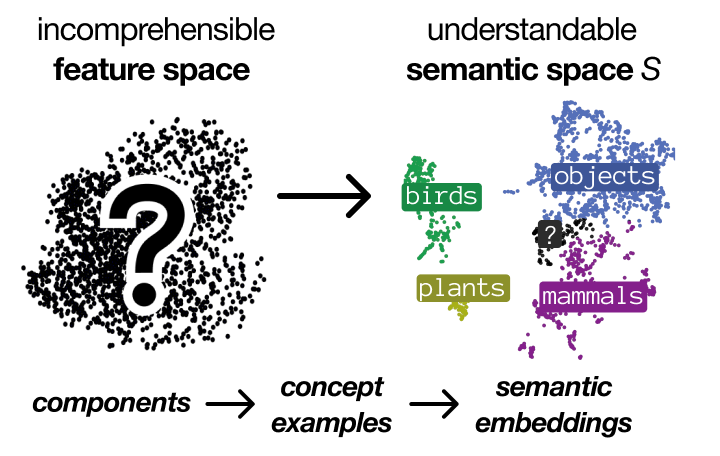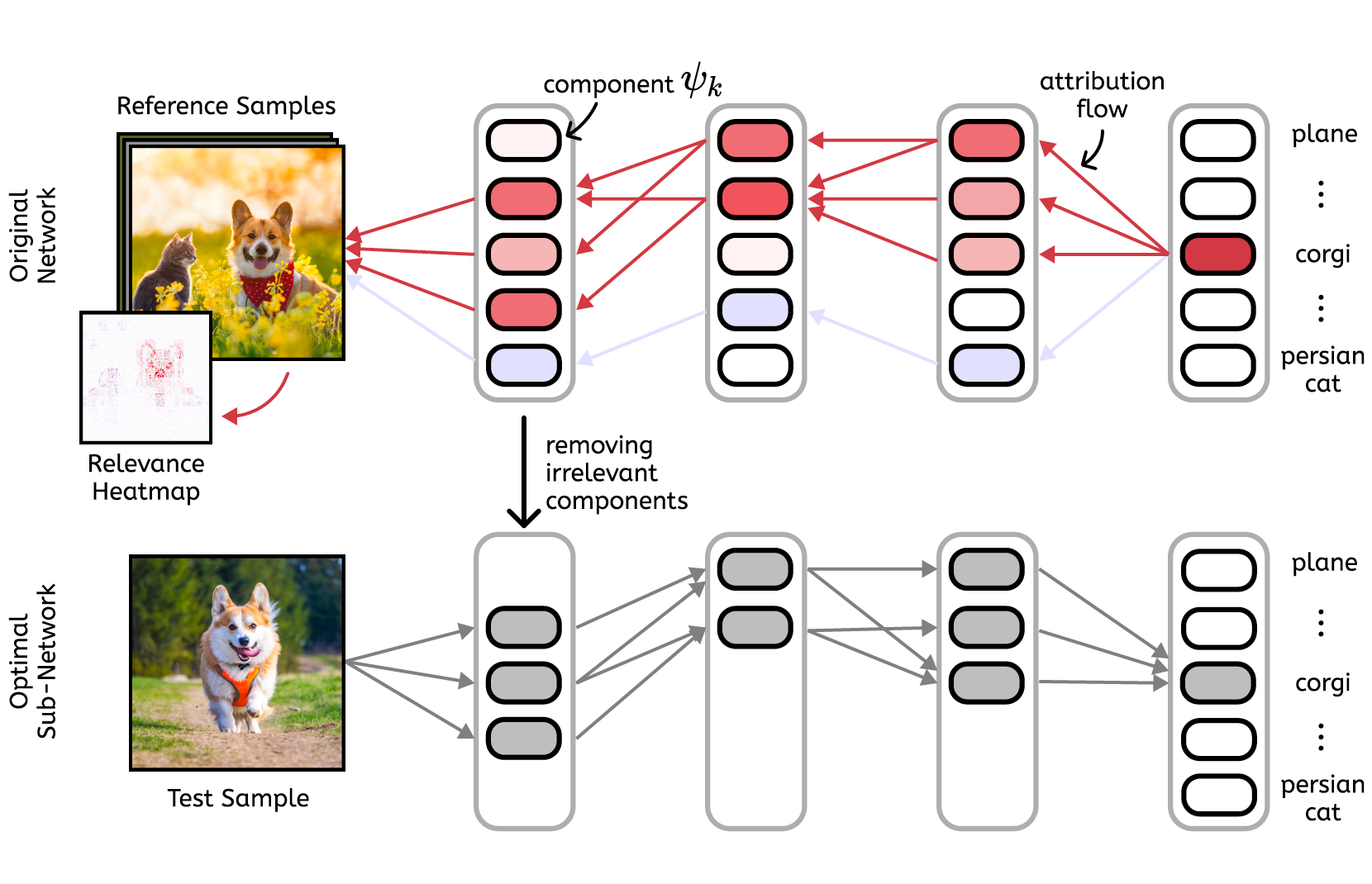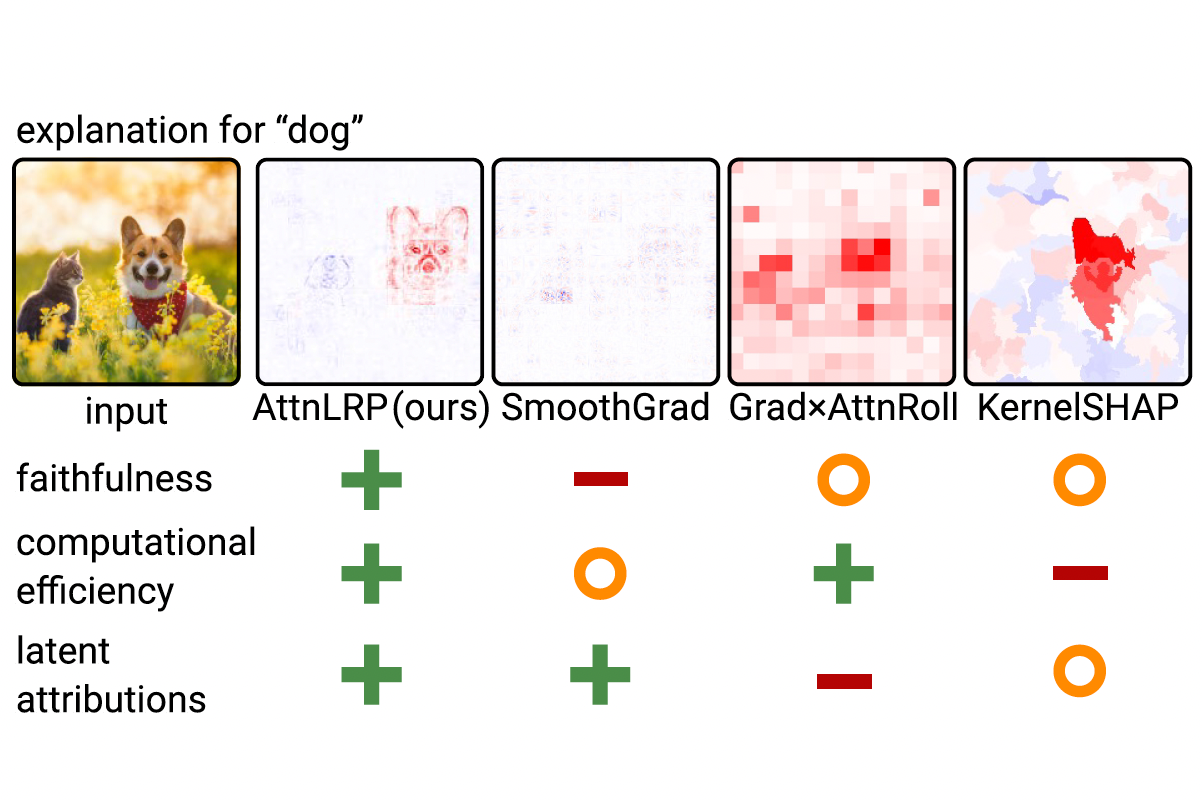
Maximilian Dreyer
PhD candidate @Fraunhofer HHI in Berlin
Explainable AI, Interpretability, AI Safety
recent

featured work
SemanticLens
SemanticLens is a universal explanation method for large AI models that provides systematic understanding and validation of hidden components, which is essential for ensuring security and transparency in safety-critical applications. By mapping the encoded knowledge of components into a semantically structured space, SemanticLens enables users to comprehensively search, describe, compare and audit a model’s inner workings.
More
January 2025
news
- Nov. 2024 // Talk about Concept-based Model Monitoring and Debugging during the KAIST XAI Tutorial Series.
- Oct. 2024 // Talk about Pruning with XAI during the All Hands Meeting of the German AI Community.
- May 2024 // Talk about Concept-level Model Explanations at Visual Intelligence workshop on concept-based XAI.
- April 2024 // PCX and PURE accepted at CVPR-24 workshops.
- Feb. 2024 // Talk about Debugging Biases of Deep Medical Models for Stanford MedAI.
work

Mechanistic understanding and validation of large AI models with SemanticLens
by Maximilian Dreyer, Jim Berend, Tobias Labarta, Johanna Vielhaben, Thomas Wiegand, Sebastian Lapuschkin, Wojciech Samek
SemanticLens is a universal explanation method for large AI models that provides systematic understanding and validation of hidden components.

Pruning By Explaining Revisited: Optimizing Attribution Methods to Prune CNNs and Transformers
by Sayed M. V. Hatefi, Maximilian Dreyer, Reduan Achtibat, Thomas Wiegand, Wojciech Samek, Sebastian Lapuschkin
We show with PXP that (optimized) attribution methods are very effective for pruning CNN and transformer models.
published:
ECCV 2024 Workshops

PURE: Turning Polysemantic Neurons Into Pure Features
by Maximilian Dreyer, Erblina Purelku, Johanna Vielhaben, Wojciech Samek, Sebastian Lapuschkin
PURE allows to purify representations by turning polysemantic units into monosemantic ones, and thus increases latent interpretability.
published:
CVPRW 2024

AttnLRP: Attention-Aware Layer-Wise Relevance Propagation for Transformers
by Reduan Achtibat, Sayed M. V. Hatefi, Maximilian Dreyer, Aakriti Jain, Thomas Wiegand, Sebastian Lapuschkin, Wojciech Samek
We extend LRP to handle attention layers in Large Language Models (LLMs) and Vision Transformers (ViTs).
published:
ICML 2024

Understanding the (Extra-)Ordinary: Validating DNN Decisions with Prototypical Concept-based Explanations
by Maximilian Dreyer, Reduan Achtibat, Wojciech Samek, Sebastian Lapuschkin
Prototypes enable an understanding of model (sub-)strategies and further allow to validate model predictions.
published:
CVPRW 2024

From Hope to Safety: Unlearning Biases of Deep Models via Gradient Penalization in Latent Space
by Maximilian Dreyer*, Frederik Pahde*, Christopher J. Anders, Wojciech Samek, Sebastian Lapuschkin
Introducing a novel method that enforces the unlearning of spurious concepts found in AI models.
published:
AAAI 2024

Reveal to Revise: An Explainable AI Life Cycle for Iterative Bias Correction of Deep Models
by Frederik Pahde*, Maximilian Dreyer*, Wojciech Samek, Sebastian Lapuschkin
Introducing Reveal to Revise (R2R), an Explainable AI life cycle to identify and correct model bias.
published:
MICCAI 2023

Revealing Hidden Context Bias of Localization Models
by Maximilian Dreyer, Reduan Achtibat, Thomas Wiegand, Wojciech Samek, Sebastian Lapuschkin
By extending CRP to localization tasks, we are able to precisely identify background bias concepts used by AI models.
published:
CVPRW 2023

From attribution maps to human-understandable explanations through Concept Relevance Propagation
by Reduan Achtibat*, Maximilian Dreyer*, Ilona Eisenbraun, Sebastian Bosse, Thomas Wiegand, Wojciech Samek, Sebastian Lapuschkin
Introducing Concept Relevance Propagation (CRP) as a local and global XAI method to understand the hidden concepts used by AI models.
published:
Nature Machine Intelligence

Explainability-Driven Quantization for Low-Bit and Sparse DNNs
by Daniel Becking, Maximilian Dreyer, Wojciech Samek, Karsten Müller, Sebastian Lapuschkin
XAI-adjusted quantization to generate sparse neural networks while maintaining or even improving model performance.
published:
xxAI - Beyond Explainable AI
Paper
September 2021
cv
Education

Master of Science: Computational Science
2020 - 2022
University of Potsdam, Potsdam
Advanced studies of computational science with focus in statistical data analysis and artificial intelligence.

Bachelor of Science: Physics
2015 - 2019
Humboldt-University, Berlin
Basic studies of physics.

2018
Uppsala-University, Uppsala
Studies in Uppsala for one semester as a part of the Erasmus exchange programme.
Working Experience

Research Associate / PhD Student
since July 2022
Fraunhofer HHI, Berlin
Research Associate in the Machine Learning Group for Explainable AI (XAI). Advancement and application of concept-based XAI methods, thereby also touching AI robustness.

Research Assistant
November 2020 - July 2022
Fraunhofer HHI, Berlin
Research Assistant in the Machine Learning Group for Explainable AI (XAI). Application and adaption of XAI methods to segmentation and object detection models. Application of XAI to make Deep Neural Networks more efficient by quantization. Development of concept-based explainability methods.
Working Student
June 2019 - November 2020
IAV, Berlin
Tool development, modeling of car motion/behaviour, simulations to analyze safety borders for driving functions. Visualization and interpretation of high-dimensional experimental results.

Working Student, Bachelor Thesis
November 2018 - June 2019
Baumer Hübner, Berlin
General research in magnetic pole rings and magnetization processes. Planing and doing measurements and analyzing the data. Analyzing the magnetic behavior of magnetic pole rings with small diameter. Comparing an analytical model, FEM simulation and experimental measurements.

Working Student
July 2016 - September 2018
DESY, Zeuthen
Supervising school classes visiting the vacuum lab of DESY in Zeuthen. Part of organization team for TeVPA 2018 conference.
contact

Welcome to my homepage!
I live in Berlin and work at Fraunhofer HHI to increase AI transparency. Analyzing and using data to create helpful and interesting results is what made me fall in love with data analytics and programming. Next to my work and studies in these areas, I like to dive deeper into web development.Please feel free to contact me via maximilian.dreyer[@]hhi.fraunhofer.de or on LinkedIn.